A refrigerator is one of the essential appliances in a modern-day kitchen. It helps preserve food items and keeps them fresh for a long time.
However, if you own a Samsung refrigerator that’s not cooling, you may face the risk of food spoilage, leading to waste and even health risks.
This article will explore why your Samsung refrigerator is not cooling and how to fix the issue.
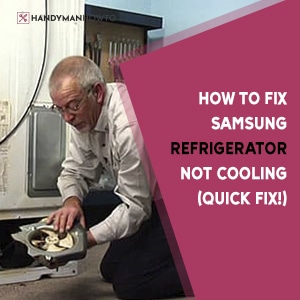
Samsung Refrigerator Not Cooling: Causes & Solutions
The inability of a Samsung refrigerator to cool is an irritating problem that can lead to food spoilage.
Nevertheless, there are steps you can take to fix it.
The first step is always to identify why your fridge isn’t cooling. There are several reasons for this. Let’s review each so you can take appropriate action depending on the underlying issue.
Reason 1: The Condenser Coils Are Dirty
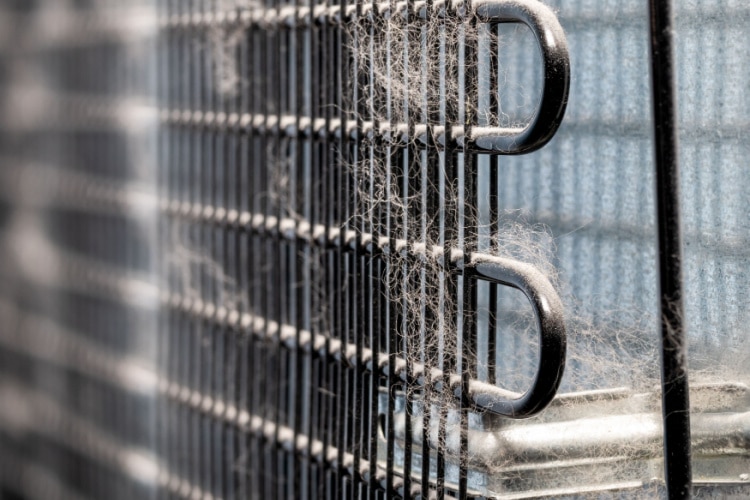
Your Samsung refrigerator’s condenser coils eliminate heat from the refrigerant. If they’re dirty, the compressor will struggle to remove the heat from the inside, causing it to malfunction and fail to cool properly.
Solution
Clean the condenser coils. To do so, you should first unplug the fridge from the outlet. Then, locate the coils, usually at the bottom or back of the refrigerator. Use a vacuum cleaner or a soft brush for them. Once clean, power back the refrigerator and check if it’s cooling correctly.
Reason 2: The Evaporator Fan Is Faulty
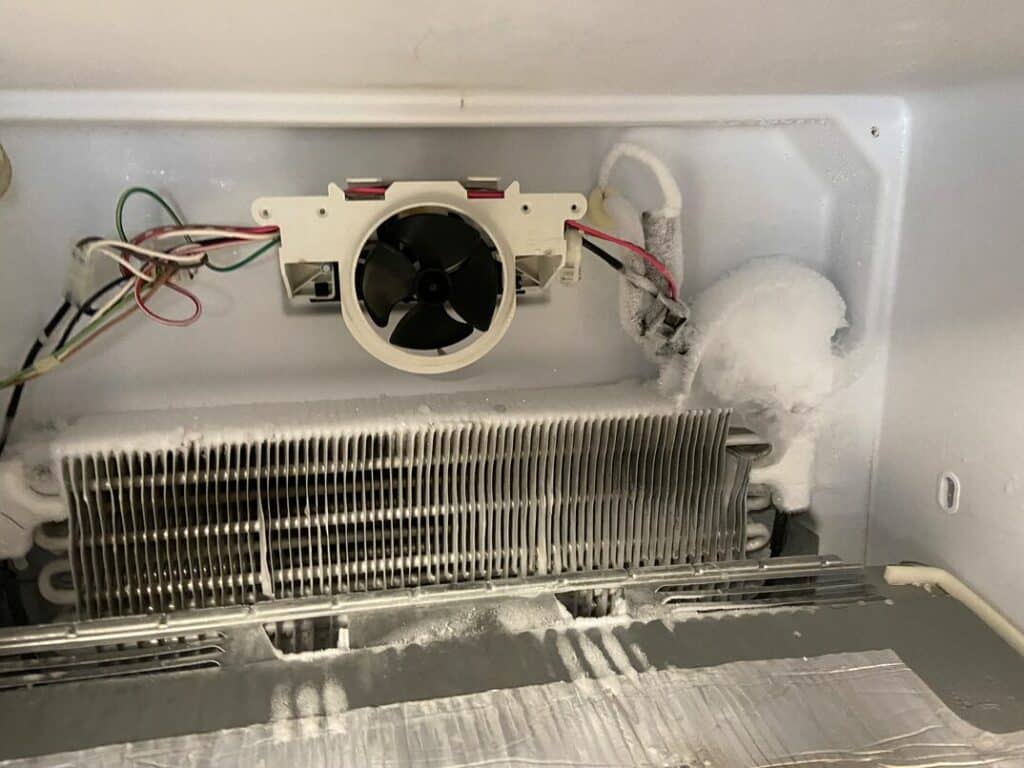
The evaporator fan circulates cool air within the fridge. If the fan fails, the fridge won’t be able to cool properly. You can test the fan by listening to its running sounds — if it’s not running smoothly or is generating weird noises, you should replace it.
Solution
To replace the evaporator fan, unplug the fridge from the outlet. Then, look for the fan, which is typically located in the freezer section. Remove the fan cover and unplug the fan motor’s cables. Then, unscrew the bolts holding the fan in place.
Gently remove the old fan and replace it with a new one. Place the fan cover and reconnect the cables. Finally, restore the fridge’s power and wait for it to start cooling again.
Reason 3: The Condenser Fan Is Faulty
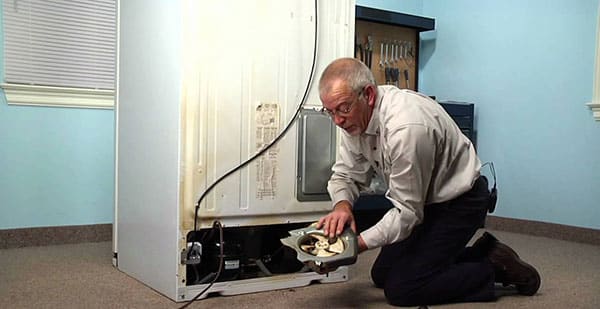
While the evaporator fan is responsible for circulating cool air throughout the unit, the condenser fan helps to remove heat from the condenser coils, allowing the refrigerant liquid to cool down and spread through the system. If the fan is not working correctly or making unusual noises, it means it’s faulty and needs to be replaced.
Solution
Replacing the condenser fan is the same as replacing the evaporator fan. First, disconnect the refrigerator from the power source. Then, locate the fan, generally placed at the bottom or back of the fridge. Unscrew the fan motor and unhook the wires from the fan motor. Then, replace it with a new one, reconnect the wires, tighten the screws, and plug the fridge into the outlet.
Reason 4: The Thermostat Is Malfunctioning

The thermostat controls the refrigerator’s temperature. If it fails, it causes the fridge to malfunction due to inadequate temperature management.
To test the thermostat, use a multimeter with a resistance or ohms setting. Connect the probes of the multimeter to the two thermostat connections. If it’s working, the multimeter should show zero or close to zero ohms. If the multimeter shows an open circuit or a high resistance reading, the thermostat is malfunctioning and must be replaced.
Solution
Unplug the refrigerator and locate the thermostat, typically inside the refrigerator compartment near the top or bottom. Remove the cover and disconnect the wires. Unscrew the thermostat and install the new one. Plug the refrigerator back into the power outlet and turn the thermostat on.
Reason 5: The Fridge Isn’t Plugged in Properly
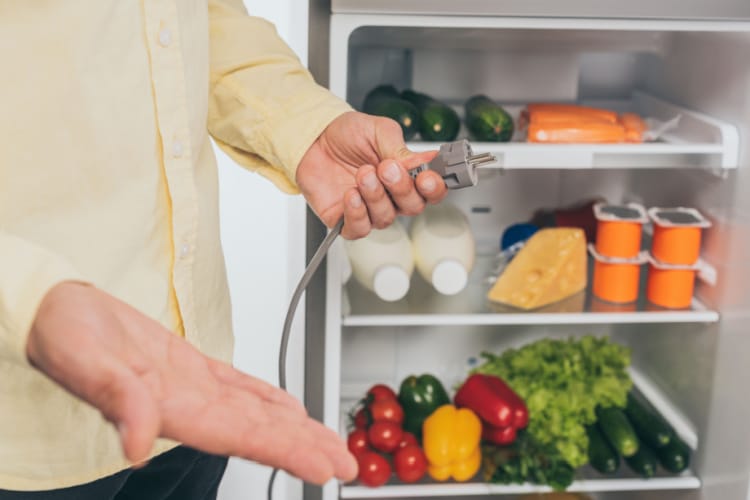
If the refrigerator is not firmly plugged in, it may not receive a steady power supply, reducing its cooling efficiency.
Solution
If the appliance isn’t plugged in correctly, locate the power plug and remove it from the outlet. Wait for 10 minutes before re-inserting it. In the meantime, the refrigerator will reset and fix any technical issues regarding cooling. When re-plugging, the power plug needs to be put all the way into the receptacle.
Reason 6: The Door Seals Are Torn, Weathered, or Dirty
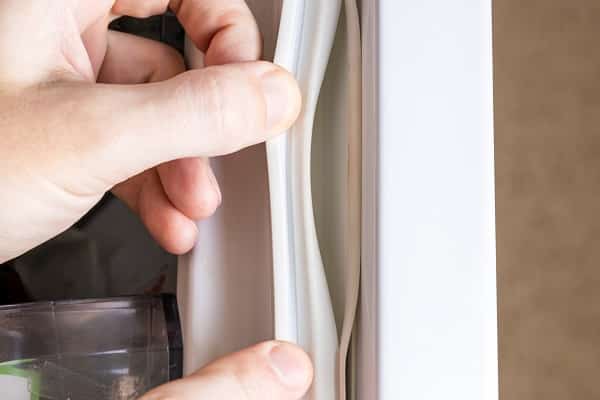
The door seals are designed to create an airtight seal between the door of the fridge and freezer compartments, helping to maintain a consistent temperature inside the unit. If the seals are damaged or dirty, warm air could leak into the chambers, forcing the fridge to work harder to maintain the desired temperature and reduce its cooling efficiency.
Visually inspect the door seals for evidence of damage. You can also use the “dollar bill” test to check the seal’s effectiveness. Close the door on a dollar bill and try to pull it out. If there is resistance, the seal is working correctly. If the bill slides out, the seal may be damaged or too dirty.
Solution
To clean the door seals, use a moist cloth and mild detergent to remove any dirt or debris that is preventing the door from maintaining a tight seal.
If the door seals are damaged, you’ll need to order the correct replacement seals for your Samsung fridge. You can find the model number inside the refrigerator, freezer compartment, or the back of the unit.
Peel off the old door seals, and clean the door’s surface where you’ll install the new seal. Then press it into the designated area, using your fingers to ensure it sticks correctly and securely. Once the new seal is installed, close the door and allow it to sit for a few hours before using the fridge.
Other Tips & Tricks for More Efficient Refrigerator Cooling
- Relocate your Samsung refrigerator if it’s exposed to sunlight or is near a heat source, such as an oven or a stove
- The recommended refrigerator temperature is 3°C (37°F), and the freezer temperature is -18°C (0°F). Adjust your refrigerator if it’s set up differently
- The refrigerator should be at least one inch away from the wall so that the fans are able to circulate the airflow and maintain temperature properly
- Don’t overstuff your refrigerator with food because you’ll obstruct the air vents, causing malfunction
Conclusion
Refrigerators are designed for one thing: to cool and preserve stored food. So, if they aren’t cooling correctly, they are worthless!
The main reasons a Samsung refrigerator won’t cool are dirty condenser coils, faulty evaporator or condenser fan, malfunctioning thermostat, improper plug into a power source, or damaged or dirty door seals. Fortunately, you can fix most issues with our solutions.
In addition to the steps we outlined, ensure the refrigerator is set to the proper temperature level, don’t put it close to the wall, near direct sunlight or a heat source, and don’t overstuff it with food.
If our solutions haven’t fixed the cooling issue, we recommend calling a skilled technician to assess and fix the issue.